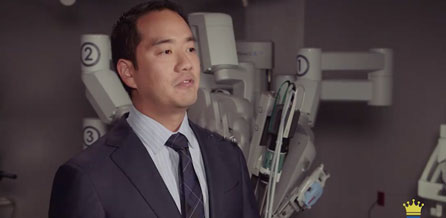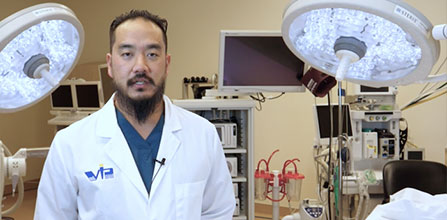The Risk of Chronic Pain After Hernia Surgery – Is It Real?
Patients searching the Internet about the complications of hernia surgery will undoubtedly come across chronic pain after hernia repair, known as chronic postherniorrhaphy pain. This is typically experienced by those who have undergone an inguinal or groin hernia repair and is loosely defined as chronic pain lasting more than six months after the procedure. The prevalence and severity of chronic pain after hernia repair is a subject of much debate with some studies showing a relatively low occurrence and others showing much higher occurrences. The following discusses some of the potential causes of chronic pain after hernia repair and how they can be mitigated:
- The first, and most commonly cited cause of postoperative chronic groin pain is surgical mesh used in the repair of most hernias. Before mesh was introduced as the gold standard for hernia repair, most hernias were sutured closed. This created a significant amount of tension and a high degree of recurrence. Mesh, placed over the hernia, creates an inflammation response from the body that promotes scar tissue to grow around the mesh and create a much stronger repair. Recurrence for tension free mesh-based hernia repairs is significantly lower than suturing. However, theoretically, the mesh may interact poorly with nerves around the hernia repair and in some cases cause irritation and chronic groin pain, especially if the inflammatory response is too great. Modern meshes are thinner, lighter and more customized to the individual patient than ever before. As a result, the inflammation response can be controlled and we believe this has significantly reduced the potential for chronic pain. Modern research is showing that absorbable meshes are offering the same strength benefit with fewer of these complications.
- Another potential cause of chronic groin pain is the past use of titanium tacks to affix the mesh to the surrounding musculature. However, modern hernia mesh fixation techniques require no tacks at all – rather, employ a self-adhering mesh. When tacks must be used, they are typically absorbable.
- The technique used to repair the hernia can also contribute to the risk of chronic groin pain. Open surgery uses sharp utensils to cut through abdominal muscle and fascia. Therefore, the potential for cutting or irritating nerves is increased. Most hernia repairs are now performed laparoscopically, using small incisions and blunt dissection, therefore reducing the risk of cutting a nerve.
- Surgeon experience is critical to ensuring the avoidance of nerve involvement. Surgeons who perform hernia repairs on a regular basis are more aware of the nerve structures in and around the surgical field. Paying close attention to these nerves during the procedure can reduce potential irritation.
- Elective versus emergency hernia surgery may make a difference in the degree of pain experienced after surgery. Emergency hernia surgery is correlated with a greater risk of complications. Therefore, patients with symptomatic hernias and appropriate surgical risk are often encouraged to have an elective surgery.
- Lastly, there’s some evidence to suggest that patients who have significant pain or discomfort before surgery have a greater likelihood of having chronic pain subsequent to their procedure.
Some Final Thoughts
The risk of chronic pain, especially after a groin hernia repair, is real despite its prevalence often being widely disputed. We believe that with the appropriate surgical technique and surgeon experience, as well as the right mesh materials, the risk of chronic pain can be mitigated.



